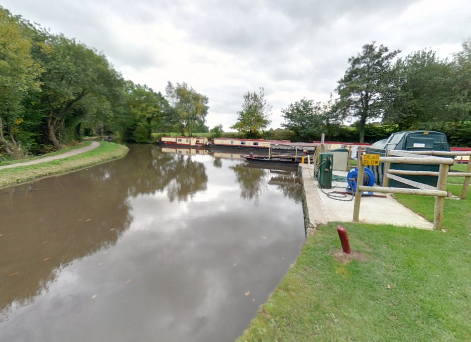Hire a Canal Boat in Wales
The Monmouthshire and Brecon Canal in Wales is landlocked, meaning it does not join up with any other canal on the UK network and runs for 36 miles from Brecon to Cwmbran. The Monmouthshire and Brecon Canal runs for almost all its route within the Brecon Beacons National Park, an area of outstanding natural beauty. The Brecon Beacons are rich in history, heritage, traditions, myths and culture. The area around offers visitors traditional market towns, stunning landscape, canal paths, castles and family attractions. The scenery is diverse from the rolling countryside and valleys to the Neolithic standing stones which are over 4,000 year old.
Goytre is our only marina based in Wales and the canal wharf is a 200 year old industrial heritage site that, as well as the marina,includes a busy visitor centre. Start your holiday with a look around the Canal Visitor Centre where you will find children’s activities, exhibitions and ever changing events on offer.
There are some wonderful Welsh towns and villages to visit whilst cruising the Monmouthshire and Brecon Canal.
In the village of Talybont-on-Usk you can still see the wharf with its disused lime kilns and the old tramroad which runs up the side of the mountain. From the village there are some stunning walks  including easy access up into the Brecon Beacons and to the Blaen-y-Glyn waterfalls.
including easy access up into the Brecon Beacons and to the Blaen-y-Glyn waterfalls.
Abergavenny is renowned for it's variety of pubs, cafés and restaurants which cater for every culinary taste. The Castle is a picturesque ruin set against the backdrop of the mountains which surround the town and is just a short walk from the main shopping area.
Brecon is a perfect town to explore for its narrow streets and passageways lined with Georgian and Jacobean shop fronts. The Cathedral and the buildings around it date from the early 12th to the 15th Century. Take a trip on the Brecon Mountain Railway Travel and through beautiful scenery into the Brecon Beacons National Park. Follow the route along the full length of the Taf Fechan Reservoir to Dol-y-Gaer.
Crickhowell is a beautiful historic town set in the Brecon Beacons National Park in the heart of the Usk Valley. The town is ideally situated for walking and you can enjoy a gentle stroll along the canal towpath or a guided walk through the National Park.
Llangynidr has an enchanting mix of architecture from the cottages to the ancient six arched bridge that spans the River Usk. There are remains of a medieval Reeves, an Anglo Saxon senior official house, in the centre of the village which was discovered in the course of archaeological excavations. The Monmouthshire and Brecon Canal is a contour canal and locks are in short supply but at Llangynidr five come along together and raise the canal for 50 feet.
In the 1860s Blaenavon was at the centre of the largest iron producing region in the world using new techniques for smelting and rolling and the remains of the blast furnaces. At the Big Pit Mining Museum go 300 feet underground with a real miner to find out what life was like for the thousands of men who worked at the coal face. At the Blaenavon Ironworks you can view the extensive remains of the blast furnaces, the cast houses and the impressively restored Water Balance Tower. Take a trip on the Blaenavon Heritage Railway which travels through the imposing industrial landscape and is the highest standard gauge railway in Wales
Currency: Sterling
Saint: St. David
Saints day: 1st March
Emblem: Daffodil or Leek
Language: English and Welsh. Welsh is a Celtic language and is spoken widely throughout Wales and is the first language in many parts of the north and west. National TV and radio stations broadcast in Welsh, road signs are written in Welsh and English and there are Welsh medium schools, books, magazines newspapers and websites.
Flag: Wales is the only part of the UK not to be represented on the Union Flag
Motto: Cymru am byth – Wales for ever
Longest River: River Towy - flowing entirely within Wales
Capital: Cardiff
Temperature/weather: The beauty of Wales is that the closeness of the mountains and coast which means that the weather can change quickly. It could be raining in one village whilst the next one along has glorious sunshine. July and August are normally the warmest months in Wales and January and February are normally the coldest.